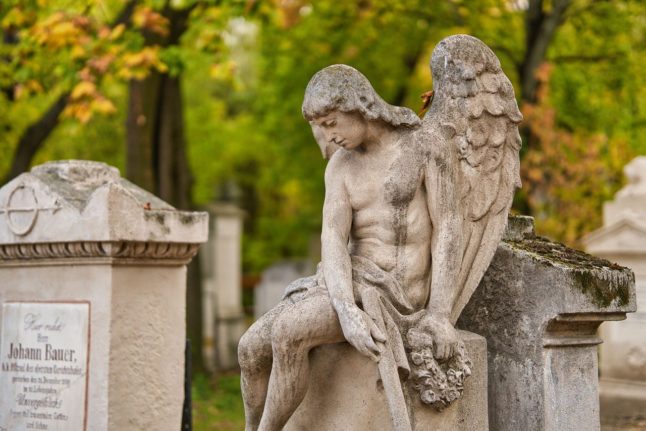Although Austrians are not known for celebrating Halloween with the same gusto as Americans, those who do have a late night on the 31st have something to look forward to – a long lie.
That’s because All Saints’ Day or Allerheiligen in German is a Christian holiday celebrated in Austria on November 1st.
The Catholic holiday is one of several Catholic festivals marked with a public holiday in Austria (including Ascension, Assumption and Christmas).
And it’s not just Austria – quite a few European countries have a public holiday on November 1st including France, Spain, Italy and some regions of Germany and Switzerland.
All Saints’ Day falls on a Wednesday this year.
What’s the history behind All Saints’ Day?
Over the first few centuries, as the number of saints grew across the Christian world, Christians struggled to honour each Christian martyr – known and unknown – with their very own holiday.
From the fourth century onwards, many Christians instead began to celebrate the inclusive All Saints’ Day which was then held on the first Sunday after Pentecost each year.
This date changed in the eighth century when Pope Gregory III dedicated a chapel to all Christian saints and Rome decided to mark All Saints’ Day on November 1st. This move was followed by Gregory IV a few decades later, in 835, who declared the Western Church should mark the occasion on the exact same day going forward.
Although All Saints’ Day originally commemorated saints and martyrs, today the focus is on commemorating the dead. Therefore, in its current form, All Saints’ Day and All Souls’ Day on November 2nd have mixed together.
What can you expect in Austria on November 1st?
Most people will have the day off work on All Saints’ Day, while businesses and shops will remain closed.
On the eve of All Saints’ Day (also known as Halloween), it is customary for lanterns to be left at Austrian graveyards. Church bells then ring at noon on the actual holiday. This signifies a release of the souls of the dead, according to the beliefs surrounding this day.
Many Austrians visit cemeteries on this public holiday and decorate the graves of loved ones with autumn flowers, like marigolds and chrysanthemums. Sometimes wafers are also placed on graves so the dead can return and eat something.
Tributes are also left at graves of soldiers who died in World War II.
Another tradition in Austria is the Allerheiligenstriezel or All Saints’ plait, a symbolic form of feeding the soul. The sweet bread pastry is usually given as a gift around this time.
When is the next public holiday in Austria?
Austria has a generous public holiday allowance with 13 days every year.
The next official public holiday is Friday December 8th, which is another religious event known as Mariä Empfängnis (Mary’s Conception).
This roots of this public holiday is a celebration of the life of the Virgin Mary as Catholics believe Mary was immaculately conceived on this day. Mary’s mother, Anne, is known as the patron saint of pregnant women.
During the Nazi era, the Feast of the Immaculate Conception was no longer allowed to be a public holiday in Austria. But it was brought back in the 1955 following a public referendum on the issue.
One thing to note is that on Mariä Empfängnis, shops are allowed to open as the holiday falls during the busiest shopping period of the year. On all other public holidays in Austria, shops are closed.
Martinstag, or St. Martin’s Day on November 11th, is one of those dates that people don’t get off from work, but many Austrians commemorate nevertheless.



 Please whitelist us to continue reading.
Please whitelist us to continue reading.
Member comments